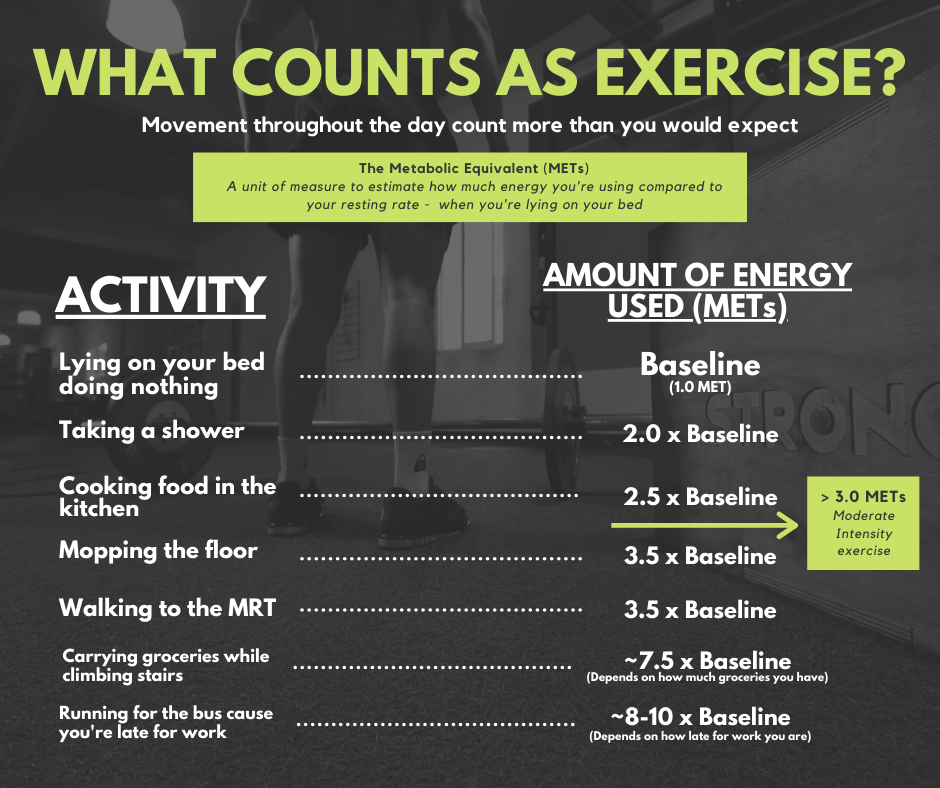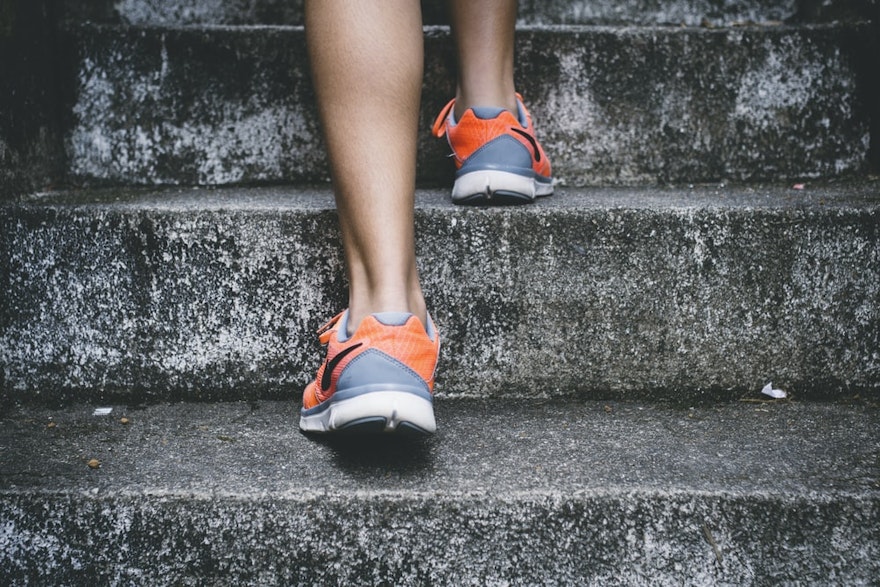In the 1980s, a Stamford professor developed a revolutionary concept to estimate the amount of energy used for each type of human activity. These activities ranged from things as simple as sitting on a chair, all the way up to intense activities like cycling up a mountain vigorously. They covered a huge range of activities as well, estimating energy expenditure on things like religious activities (sitting quietly in a pew VS standing and singing in a church) and even things like self-care or sexual activity.
The professor named this document: The Compendium of Physical Activity, and then gave each physical activity a score, called the "Metabolic Equivalent (MET)". To this day, the MET scoring has been used broadly across the research and fitness world to compare the energy intensities of a physical activity to another.
Let's take a look at our present day. We're stuck at home, gyms are crowded and it's generally tough to fit in exercise without coming into contact with people. How do we continue to keep fit during these times?
Valid Exercise?
The question we have to ask ourselves first is this: What counts as "valid" exercise? It's surprising how many people only consider exercise "valid" in the traditional sense - when we start breaking into a sweat or when our breathing gets heavier, or when we actually feel the burn, or... you get the idea. We hold very strong pre-conceived notions of what exercises are worth doing, and what aren't. These naturally excludes many different things, including walking, housework or even leisure activity like going to the beach for a swim.
That's where the Compendium of Physical activity comes in - It tells us that all movements count. They count because every single movement, allows us to burn some level of energy. In fact, if you're just sitting here and reading this post, you're burning energy too - just at a very low, and basic level!
So here's the big takeaway: If you want to keep fit in this WFH world, start first by reframing the way you think about exercise. You don't have to be a an Ironman or a gym rat to reap the health benefits of exercise, instead, the science tells us that we need to reap about 150 minutes of moderate intensity physical exercise in a week to remain healthy. And we now know that these physical movements add up.
If you'd like to take a closer look at what counts as exercise - check out this table below:


Here's some ideas to help you rack up those movements and keep fit:
1) Walk instead of taking the bus
By walk, I don't even mean power walks or brisk walking or anything like that. Just a normal stroll will do. If you think about it, this tip will probably save you money and won't cost you that much time as well.
We're recommending walking close to just 20 mins a day to hit the 150 mins of moderate intensity exercise needed each week for a healthier you. When you view walking as a form of transport - you're not taking that much more time out of your day!
Walking is one of the most underrated forms of exercise. In fact, fitness professionals recommend it as a key fat burning exercise - and also as a foundation if you'd like to build up to running a marathon. The American Council of Exercise even recommends walking as the core cardio sessions of their 3-month workout plan.
Check out other great benefits of walking (this really has been widely documented all over the web, just google "benefits of walking").
2) Stand up, sit down, then stand up again
Hear me out here. When you stand, sit, stand again, you're kind of doing a half squat. Now if you multiply that a few times into a full exercise routine, you'd probably get a great working just sitting and standing from your chair.
More importantly (and often very underrated thing to do), is to get off your chair every 45 mins or so after sitting for long periods of time. This gives your muscles and really good stretch, and prevents any muscle shortening from excessive sitting.
That's why we've created this quick and easy 10 min chair-fit exercise, you can do straight from your own workspace right now. Check out our ultimate WFH exercise guide here.
3) Get some housework done
This one is pretty obvious. You've probably felt it before, feeling really tired after mopping the floor or whipping up a big meal. That's because you've expended quite abit of energy there, congratulations! If you've had a busy day, and come back to a home filled with a list of chores to do, maybe start thinking of it all as exercise and movements, rather than chores!
For the really hardcore who want to see which household work is best to burn calories, here you go:
Average calories burnt per hour:
- Ironing while standing - 80 cal
- Cleaning surfaces using a cloth - 136 cal
- Cooking lasagna - 150 cal
- Mopping the floor - 170 cal
- Washing the car - 324 cal
So the next time you decide to put off your annual spring cleaning, or decide to take the bus instead of walking, think twice. You might just be missing a great workout!
![[object Object]](/lib_eafKUlopGVWlsuZn/jvwwzyore0zzpp75.png?w=106)
